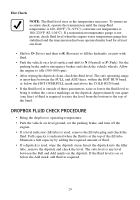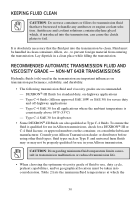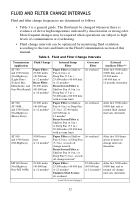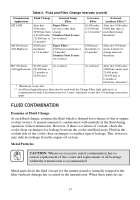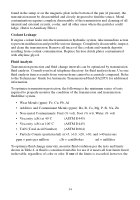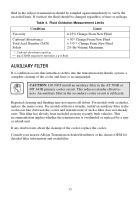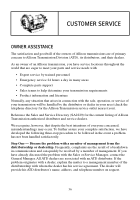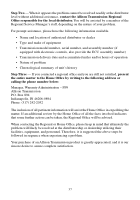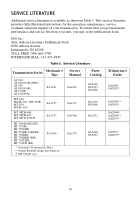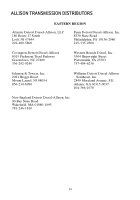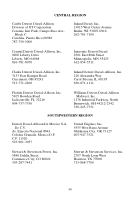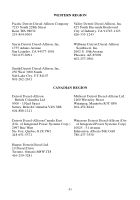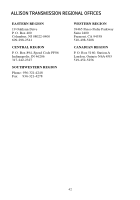ALLISON-OM1334EN - Page 39 of 48
34
found in the sump or on the magnetic plate in the bottom of the pan (if present), the
transmission must be disassembled and closely inspected to find the source. Metal
contamination requires complete disassembly of the transmission and cleaning of all
internal and external circuits, cooler, and all other areas where the particles could
lodge. (Refer to Auxiliary Filter.)
Coolant Leakage
If engine coolant leaks into the transmission hydraulic system, take immediate action
to prevent malfunction and possible serious damage. Completely disassemble, inspect,
and clean the transmission. Remove all traces of the coolant and varnish deposits
resulting from coolant contamination. Replace friction clutch plates contaminated
with ethylene glycol.
Fluid Analysis
Transmission protection and fluid change intervals can be optimized by transmission
fluid analysis. Consult your local telephone directory for fluid analysis firms. Use one
fluid analysis firm as results from various firms cannot be accurately compared. Refer
to the Technicians’ Guide for Automatic Transmission Fluid (SA2055) for additional
information.
To optimize transmission protection, the following is the minimum series of tests
required to properly monitor the condition of the transmission and transmission
fluid/filter system.
• Wear Metals (ppm): Fe, Cu, Pb, Al
• Additive and Contaminant Metals (ppm): Ba, B, Ca, Mg, P, Si, Na, Zn
• Non-metal Contaminants: Fuel (% vol), Soot (% wt), Water (% vol)
• Viscosity (cSt) at 40˚C
(ASTM D445)
• Viscosity (cSt) at 100˚C
(ASTM D445)
• TAN (Total Acid Number)
(ASTM D664)
• Particle Counts (particles/ml) at >5, >10, >20, >30, and >40 microns
ppm = parts per million
cSt = centiStokes
ml = milliliter
To optimize fluid change intervals, monitor fluid oxidation per the tests and limits
shown in Table 4. A fluid is considered suitable for use if it meets all four limits listed
in the table, regardless of color or odor. If
one
of the limits is exceeded, however, the
Back to Top






